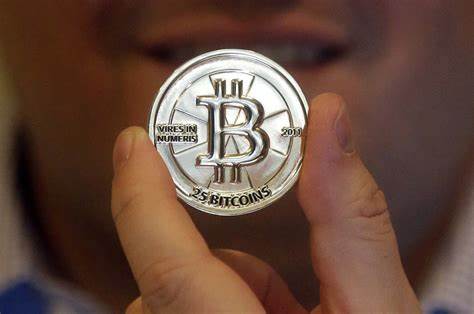Your cart is currently empty!
Coinbase Crash: What Happened, What It Means?

Hey there, fellow crypto enthusiasts and curious minds! If you’ve been keeping up with the latest headlines in the world of cryptocurrency, you’ve probably heard about the recent Coinbase crash that sent shockwaves through the market. Yep, the same Coinbase that’s synonymous with mainstream adoption, user-friendly interfaces, and a gateway for millions of people to dip their toes into the world of digital assets. But fear not, my friends, because today we’re diving deep into the Coinbase crash – what happened, what it means for the crypto ecosystem, and what comes next.
First things first, let’s set the stage: it’s April 14, 2021, and Coinbase, the largest cryptocurrency exchange in the United States, is gearing up for its highly anticipated direct listing on the NASDAQ stock exchange. The mood is electric, the anticipation palpable, as investors and crypto enthusiasts alike eagerly await the moment when Coinbase shares become publicly tradable. After all, this is a watershed moment for the crypto industry – a validation of sorts that signals the maturation and mainstream acceptance of digital currencies.
But as the clock ticks closer to the opening bell, disaster strikes: Coinbase’s trading platform experiences a major outage, leaving users unable to buy or sell cryptocurrencies at a critical moment. Panic ensues, as traders scramble to access their accounts and capitalize on the anticipated volatility surrounding the listing. Meanwhile, outside the hallowed halls of Wall Street, crypto Twitter erupts in a cacophony of memes, speculation, and outrage, as users vent their frustration and disbelief at Coinbase’s failure to keep pace with the demand.
So, what exactly caused the Coinbase crash? Well, it’s a classic case of too much demand and not enough infrastructure to handle it. As millions of users flooded Coinbase’s platform in anticipation of the direct listing, the exchange’s systems buckled under the strain, unable to cope with the unprecedented surge in traffic. Despite months of preparation and stress-testing, Coinbase’s servers simply couldn’t keep up with the deluge of orders, leading to widespread outages and disruptions for users worldwide.
But the Coinbase crash is about more than just technical glitches and server downtime – it’s a stark reminder of the challenges and growing pains that come with rapid growth and mainstream adoption. For years, Coinbase has been the go-to platform for newcomers looking to buy their first Bitcoin or Ethereum, thanks to its user-friendly interface, regulatory compliance, and robust security measures. But as the crypto market explodes in popularity and attracts a new wave of retail and institutional investors, Coinbase’s infrastructure is struggling to keep pace with the demand.
And let’s not forget the broader implications of the Coinbase crash for the cryptocurrency ecosystem as a whole. As one of the largest and most prominent exchanges in the world, Coinbase plays a pivotal role in shaping market sentiment, liquidity, and price discovery for a wide range of digital assets. When Coinbase goes down, it sends shockwaves through the entire market, triggering cascading sell-offs, flash crashes, and widespread volatility as traders scramble to adjust their positions.
But amidst the chaos and uncertainty, there’s a silver lining to be found: the Coinbase crash serves as a wake-up call for the entire crypto industry, forcing exchanges, developers, and investors alike to confront the harsh realities of scaling in a hyper-growth environment. It’s a stark reminder that the road to mainstream adoption is paved with obstacles, challenges, and setbacks – but it’s also paved with opportunity, innovation, and untold potential.
So, what comes next for Coinbase and the crypto ecosystem? Well, if history is any guide, it’s safe to say that Coinbase will bounce back stronger than ever, armed with valuable lessons learned from the recent debacle. In the days and weeks ahead, we can expect to see Coinbase double down on its efforts to improve scalability, reliability, and performance, investing heavily in infrastructure upgrades, technical enhancements, and customer support initiatives to prevent future outages and disruptions.
But beyond Coinbase, the broader crypto ecosystem stands to benefit from the fallout of the crash, as exchanges and developers redouble their efforts to build more resilient, decentralized, and censorship-resistant alternatives to traditional financial infrastructure. From decentralized exchanges (DEXs) and peer-to-peer trading platforms to layer 2 scaling solutions and blockchain interoperability protocols, the future of crypto is bright – and the Coinbase crash is just a blip on the radar in the grand scheme of things.
So, there you have it, folks – a conversational deep dive into the Coinbase crash and its implications for the crypto ecosystem. While the recent outage may have rattled some cages and tested the nerves of even the most seasoned traders, it’s ultimately a temporary setback in the grand journey towards a more open, inclusive, and decentralized financial system. So, keep calm, hodl strong, and remember: in crypto, every crash is just a chance to buy the dip and ride the wave to new highs. Until next time, happy trading, and may the blockchain be with you!